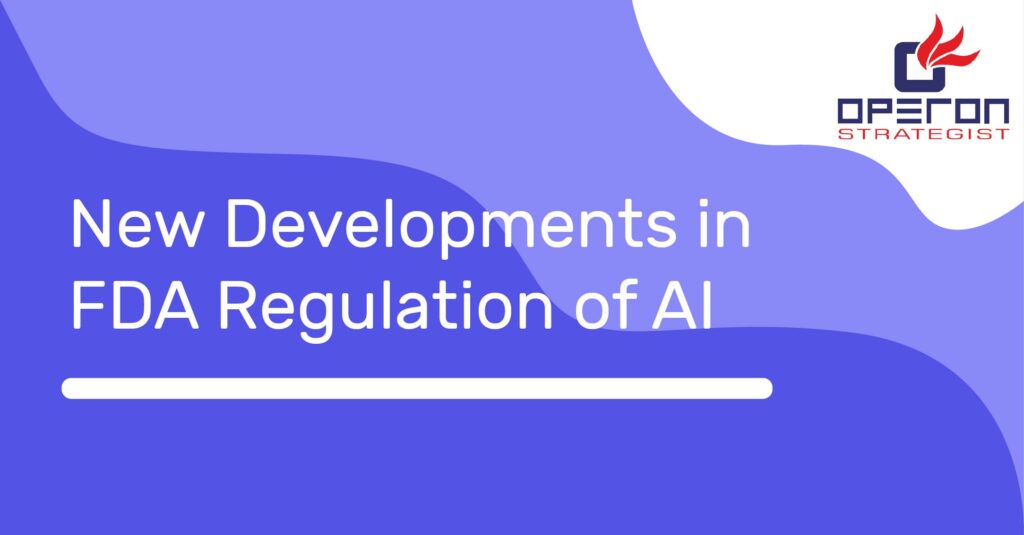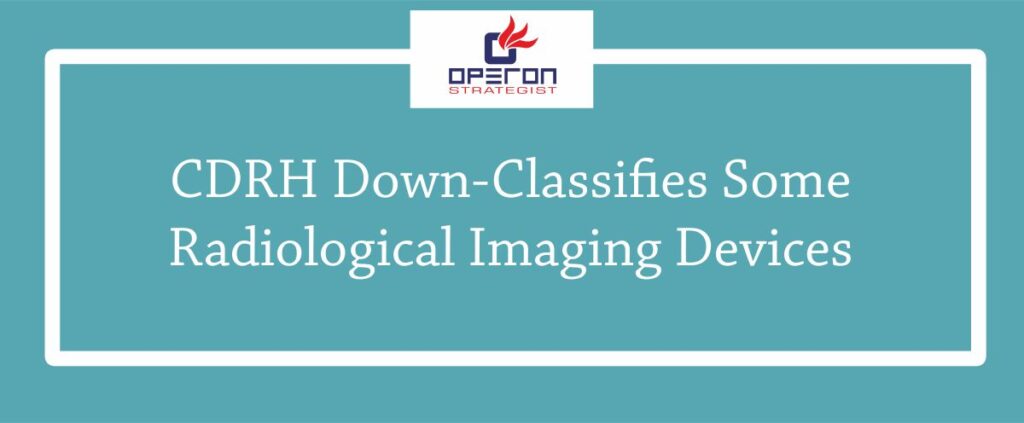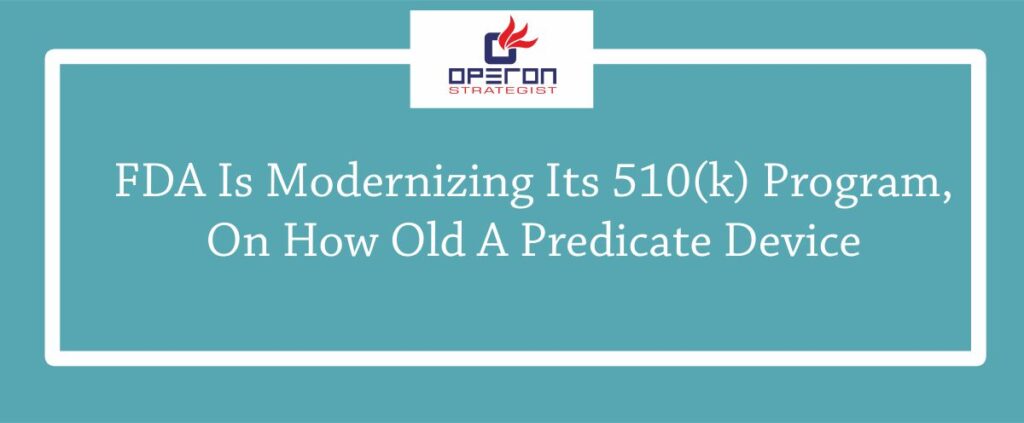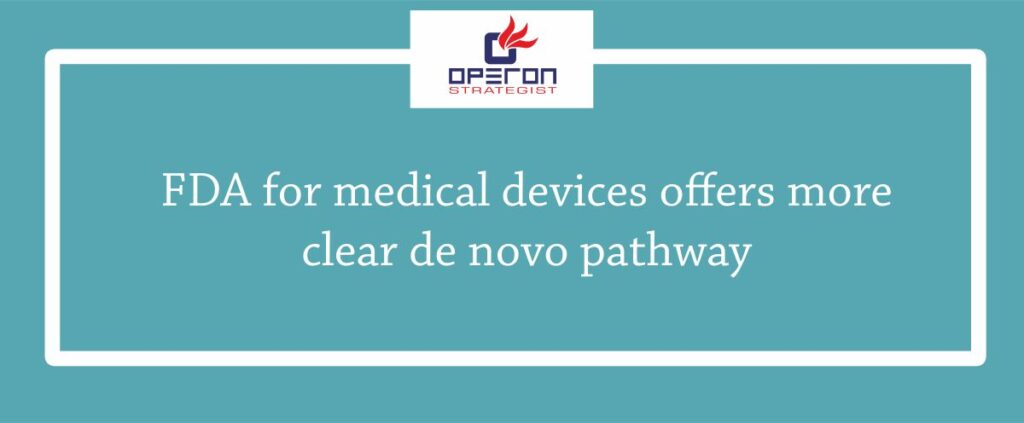New Developments in FDA Regulation of AI have been announced on Tuesday that it is developing a framework for regulating artificial intelligence products used in medicine that continually adapt based on new data. Artificial intelligence (\”AI\”) can be broadly defined as a device or product that can imitate intelligent behavior.
In the health care space, this could include a machine learning algorithm that evolves and improves as new data inputs are entered. This type of adaptive algorithm can provide physicians with diagnostic information for numerous medical conditions.
While AI-based medical products hold tremendous potential, the question of their regulation has challenged the U.S. Food and Drug Administration (“FDA”).FDA regulates software-based devices. FDA reviews medical devices through FDA 510(k)clearance process or premarket approval. A 510(k) is premarket submission which says that the device is safe & effective.
At issue are the medical device provisions of the Federal Food, Drug, and Cosmetic Act (\”FDCA\”), which were initially crafted to address medical devices existing in the mid-1970s when the Medical Device Amendments were enacted. These types of products were mostly hardware based, and iterative technology design changes were relatively infrequent.
Recently New Developments in FDA Regulation of AI has been taken o address industry concerns about regulation of the digital sector. FDA created a Digital Health Program tasked with developing and implementing a new regulatory model for digital health technology. Over the last five years, the program has issued several enforcement discretion guidance documents.
In light of that general agreement, what progress are we making toward that goal? This article focuses on some of FDA’s initiatives over the last year and specifically examines the agency’s efforts to define the scope of its New Developments in FDA Regulation of AI, the process and substance of FDA premarket reviews, and finally a few special issues associated with the New Developments in FDA Regulation of AI.
The New Developments in FDA Regulation of AI guideline presumes that software so developed may not conform to the existing certification process, such that adaptations and extensions to the certification process are needed. So, how does the FDA propose to extend the regulatory process?
First let’s look at the categories of modifications the FDA is examining. As defined in the guidelines, these are grouped under:
- Performance – improvements related to analytical and clinical performance, with no change to intended use or input type
- Inputs – changes in inputs with no change to intended use, and
- Intended Use – a change in the significance of the information provided by the SaMD
By including guidelines for the development and release environment and processes, the process seeks to ensure that subsequent releases conform to the original certifications, or that the certifications are revised appropriately, or that an additional review and certification process is triggered prior to release.
So, how is the “organization’s excellence” reviewed and qualified? The FDA outlines a two-fold approach that seeks to:
- Assure the usage of Quality Systems and Good Machine Learning Practices (GMLP) by the organization, and
- Assure the usage of SaMD Pre-Specifications (SPS) describing the modifications and Algorithm Change Protocol (ACP) processes to achieve the changes and control the risks.
These approaches work together to determine the level of FDA review required for new modifications. As an example, a change that solely increases performance, is consistent with the SPS, utilizes existing ACP, and did not change intended use or inputs could be made without additional FDA review.
New Developments in FDA Regulation of AI
AI is different from other medical devices, due in part to the fact that AI learns on the job. The fact that such learning changes performance over time and the fact that the company might make frequent updates both suggest the need for a new regulatory approach.
1. Scope Of FDA Regulation Of Medical AI
FDA has been working to clarify what software is regulated and what is not. The most recent phase of those efforts began in December 2016 when Congress passed the 21st Century Cures Act (Cures Act), section 3060(a), which modified the definition of a medical device in the Food, Drug & Cosmetic Act.
The 2016 amendments laid out several categories of software that Congress excluded from FDA regulation. A year later, in 2017, FDA started to implement that legislation by publishing a few draft guidance’s, including one on Clinical and Patient Decision Support Software.
Much has been written on that topic over the last several years, so this article will only focus on developments in implementing this section since last fall.
a.Software that Functions as an Accessory to a Medical Device
Software remains regulated under the Cures Act if it is “intended to acquire, process, or analyze a medical image or a signal from an in vitro diagnostic device or a pattern or signal from a signal acquisition system.” That language is difficult to understand, but at a high level Congress was trying to reserve within FDA’s regulatory scope software that, for example, analyzed radiological images or read EKG signals. In September 2019.
b.Software as a Medical Device (SaMD)
FDA potentially regulates clinical decision support (CDS) software that analyzes medical information to support or provide a recommendation to a healthcare professional about prevention, diagnosis, or treatment of a disease or condition.” potentially” because such software is excluded from FDA regulation if the software enables the professional “to independently review the basis for the recommendations that such software presents so that it is not the intent that the [professional] rely primarily on any of such recommendations to make a clinical diagnosis or treatment decision regarding an individual patient.
c. Unregulated Software, including Enforcement Discretion
This topic gets confusing because there is certain software that FDA cannot by statute regulate, and then there is certain software that FDA says it has the right to regulate but simply chooses not to. That stuff makes my head hurt, so I’m going to lump it all together here.
New Developments in FDA Regulation of AI updated a whole slew of guidance documents defining what’s unregulated in September of 2019, at the same time the agency proposed the new CDS guidance. Old guidance that FDA updated in September includes:
- Changes to Existing Medical Software Policies Resulting from Section 3060 of the 21st Century Cures Act
- Policy for Device Software Functions and Mobile Medical Applications
- Medical Device Data Systems, Medical Image Storage Devices, and Medical Image Communications Devices
- General Wellness: Policy for Low Risk Devices
- Off-The-Shelf Software Use in Medical Devices
The guidance’s explain both software categories no longer regulated under the Cures Act as well as software categories where FDA is willing to exercise enforcement discretion.
2. Process For Reviewing AI Premarket Submissions
a. Current Process: De Novo
Presently, there is a dearth of predicate devices for many AI applications outside of radiology. As a consequence, outside of radiology, many of the new AI applications are coming to market via the de novo review process.
Unfortunately, that process is long and largely unpredictable. In practice it is more like a premarket approval application, in the sense that FDA has a freer hand to define what the agency wants to see than it has in the 510(k) process in which the agency is limited to those issues related to substantial equivalence. The de novo process requires an assurance of safety and effectiveness typically accomplished through a clinical trial. On top of that, because it’s a reclassification process, the applicant has to demonstrate regulate-ability, which means that:
- The safety and effectiveness profile has to be proven to be low enough that FDA is comfortable with reclassifying the product into class I or II, and
- If class II, the agency knows how to develop special controls to ensure safety and effectiveness of the product category.
While there are exceptions like Apple, which managed to breeze through the de novo process in short order, the vast majority of de novo applications are proceeding through a long and torturous route. While the long-term trend shows the number of de novo submissions is growing,
3. Substantive Requirements AI will Have To Meet Prior To Marketing
a. Preclinical and Clinical Testing
For those who want to understand what FDA would require in the form of preclinical and clinical testing for new uses of AI outside of radiology, FDA consistently recommends that developers follow the two primary radiology guidances, including one updated in January 2020:
- Clinical Performance Assessment: Considerations for Computer-Assisted Detection Devices Applied to Radiology Images and Radiology Device Data – Premarket Approval (PMA) and Premarket Notification [510(k)] Submissions, January 2020
- Computer-Assisted Detection Devices Applied to Radiology Images and Radiology Device Data – Premarket Notification [510(k)] Submissions, July 2012
The 510(k) guidance is less useful simply because there are fewer 510(k) opportunities available outside radiology due to the lack of predicate devices. But it nonetheless has good guidance on how to address the intended use issues associated with machine learning.
On the whole, FDA seems very enthusiastic about the possibilities for AI to improve healthcare. That’s gratifying to see. While progress in the development of a new regulatory approach is slow, that’s also not all bad. It would be worse in many ways for FDA to act precipitously. These are complicated issues, and it will take time to develop an appropriate approach, in part because it will take time for FDA to acquire enough expertise. And most likely, whatever new approach we come up with will require new statutory authority. That said, it is incumbent on all of us to work as quickly as we can to bring these exciting new developments to waiting patients. The possible improvements to patient care are enormous. regulatory changes are for the safety of devices , we are team of medical device consultant who always provide regulatory services and turkey project solutions to manufacturer .
- adminhttps://operonstrategist.com/author/admin-2/
- adminhttps://operonstrategist.com/author/admin-2/
- adminhttps://operonstrategist.com/author/admin-2/
- adminhttps://operonstrategist.com/author/admin-2/




